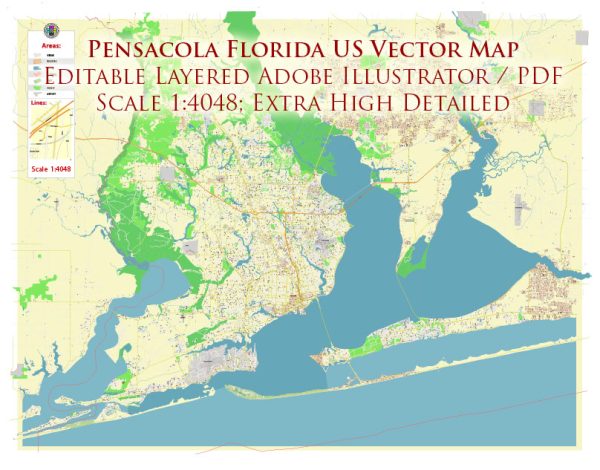Pensacola, Florida, boasts a rich architectural history that reflects the city’s diverse heritage and coastal location. Here’s a description of the architecture in Pensacola:
- Historic Districts: Pensacola is home to several well-preserved historic districts, such as the Seville Historic District and North Hill Preservation District. These areas feature a mix of architectural styles, including Spanish, Colonial Revival, Victorian, and Craftsman. Many buildings in these districts date back to the 19th and early 20th centuries.
- Spanish Influence: Pensacola’s architectural identity is strongly influenced by its Spanish heritage, as it was the first European settlement in the continental United States. The Spanish Colonial Revival style is prevalent, characterized by features like stucco walls, red-tiled roofs, wrought iron balconies, and arched doorways.
- Victorian Architecture: Victorian-era buildings can be found throughout the city, with ornate details, steep-pitched roofs, and decorative trim. These structures often feature a combination of Queen Anne, Italianate, and Gothic Revival elements.
- Creole Cottages: In some areas, particularly in Pensacola’s historic neighborhoods, Creole cottages are prevalent. These small, one-story homes feature wide front porches and steeply pitched roofs, showcasing a French Creole influence.
- Colonial Revival: The Colonial Revival style is another prominent architectural choice, characterized by symmetrical designs, columns, and classical elements. Many historic buildings and homes have been influenced by this style.
- Beachfront and Coastal Design: Along the Gulf Coast, you’ll find modern beachfront and coastal-inspired architecture. These homes often incorporate features such as open floor plans, large windows to capture ocean views, and elevated structures to mitigate the risk of flooding.
- Contemporary Architecture: In more recent years, contemporary architectural styles have made their mark in Pensacola. These designs incorporate modern materials, clean lines, and large windows, often taking advantage of the city’s beautiful coastal scenery.
- Military Influence: Given its proximity to military bases, Pensacola also features some military architecture. The Naval Air Station Pensacola, for example, has a mix of historic and modern military buildings.
- Revitalization Efforts: Pensacola has made significant efforts to preserve and revitalize its historic architecture. Many buildings have been renovated and repurposed for new uses, contributing to the city’s unique charm.
Overall, Pensacola’s architecture is a blend of history and innovation, showcasing its Spanish roots and the influence of various architectural styles over the centuries. The city’s architectural diversity makes it an appealing destination for those interested in history, culture, and coastal living.


 Author: Kirill Shrayber, Ph.D.
Author: Kirill Shrayber, Ph.D.